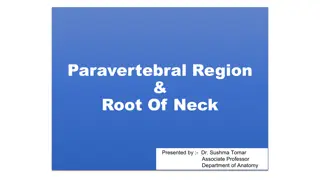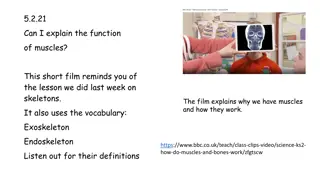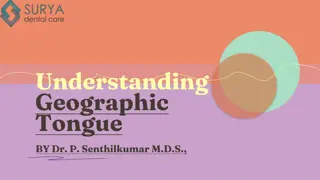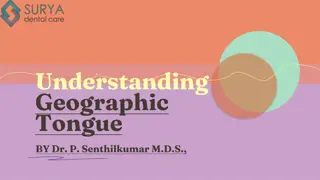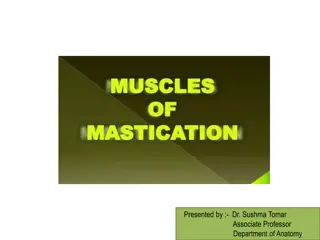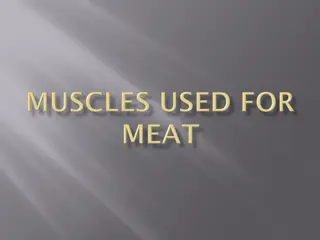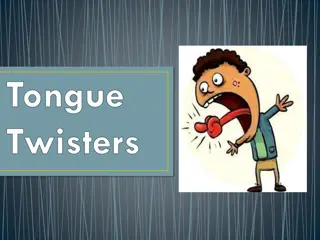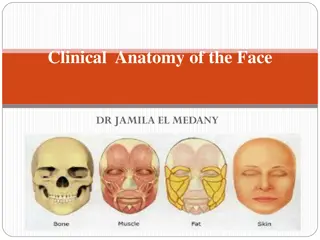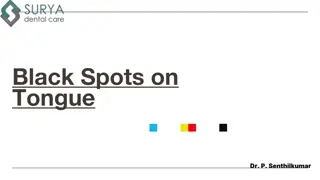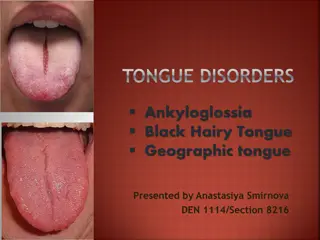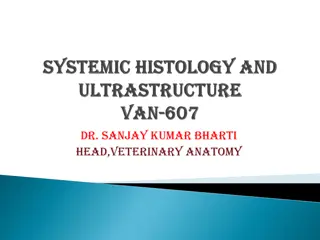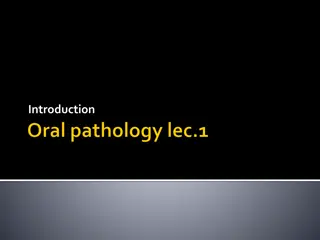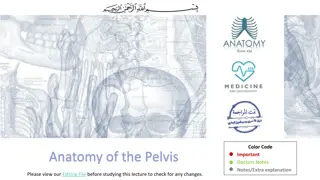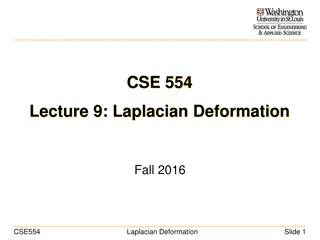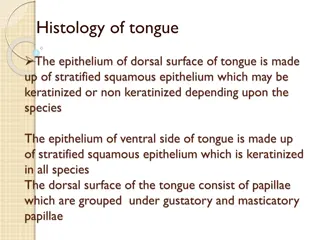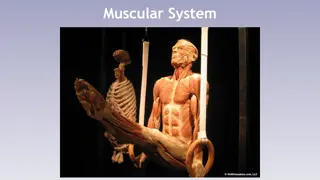Understanding the Intrinsic Muscles of the Tongue - Anatomy and Physiology Overview
In this detailed presentation by Dr. Sushma Tomar, Associate Professor of Anatomy, the intrinsic muscles of the tongue are explored, along with their functions, arterial and venous supply, lymphatic drainage, and nerve supply. The lecture covers the four intrinsic muscles in each half of the tongue, their locations, and specific actions. Additionally, it delves into the arterial supply from the lingual artery and facial artery, venous drainage via deep lingual veins, and lymphatic drainage pathways. The content provides a comprehensive understanding of the intricate structures within the tongue.
Download Presentation

Please find below an Image/Link to download the presentation.
The content on the website is provided AS IS for your information and personal use only. It may not be sold, licensed, or shared on other websites without obtaining consent from the author. Download presentation by click this link. If you encounter any issues during the download, it is possible that the publisher has removed the file from their server.
E N D
Presentation Transcript
TONGUE-II Presented by :- Dr. Sushma Tomar Associate Professor Department of Anatomy
Lesson Plan Intrinsic Muscles of Tongue Arterial supply Venous drainage Lymphatic drainage Nerve supply Applied aspects
Intrinsic Muscles Run in three directions: Longitudinal. Horizontal (Transverse). Vertical. Occupy the upper part of the tongue. Attached to the submucosa and to the median fibrous septum. There are 4 intrinsic muscles in each half of the tongue: - Superior longitudinal. - Inferior longitudinal. - Transverse. - Vertical.
Intrinsic Muscles contd Superior longitudinal- Location- Beneath the mucosa. Actions- Shortens the tongue. Makes the dorsum concave. Inferior longitudinal- Location- Close to inferior surface, between Genioglossus and Hyoglossus. Actions- Shortens the tongue. Makes the dorsum convex.
Intrinsic Muscles contd Transverse- Location- Extends from median septum to the margin. Actions- Makes the tongue narrow and elongated. Vertical- Location- At the border of anterior part of tongue. Actions- Makes the tongue broad and flattened.
Arterial Supply Lingual artery. Facial artery. Ascending pharyngeal artery. Lingual artery: Deep lingual arteries- to anterior part. Dorsal lingual arteries- to posterior part. Facial artery: Tonsillar branch.
Venous Drainage Deep lingual vein. Vanae comitantes accompanying lingual artery. Vanae comitantes accompanying hypoglossal nerve. Deep lingual vein: Principal vein of the tongue. Visible on inferior surface of tongue, near the median plane. Vanae comitantes accompanying lingual artery: Joined by dorsal lingual veins.
Lymphatic Drainage Lymphatics are grouped into 4 sets: Apical. Marginal. Central. Basal [Dorsal]. Apical lymphatics drain: Tip. Inferior surface. [Submental Submandibular Jugulo-Omohyoid Marginal lymphatics drain: Marginal portions of anterior 2/3rd of tongue. [Submandibular Lower Deep Cervical] Central lymphatics drain: Central portions of anterior 2/3rd of tongue [Deep Cervical] Bilaterally Basal lymphatics drain: Root of tongue. [Upper Deep Cervical] Bilaterally
Nerve Supply Motor Supply- All muscles of tongue are supplied by Hypoglossal Nerve except Palatoglossus. Palatoglossus is supplied by cranial root of Accessory Nerve. Sensory Supply- Anterior 2/3rd General Sensations- Lingual Nerve Special Sensations of Taste- Chorda Tympani Nerve [except circumvallate papillae which are supplied by Glossopharyngeal Nerve. Posterior 2/3rd General Sensations & Special Sensations of Taste- Glossopharyngeal Nerve. Posterior-most part- Internal Laryngeal Nerve.
Applied Aspects Unilateral paralysis of Tongue: Ipsilateral deviation of tongue. Action of Genioglossus muscle is used for clinical testing of Hypoglossal Nerve. Unilateral contraction of Genioglossus deviates the tongue to the opposite side.





